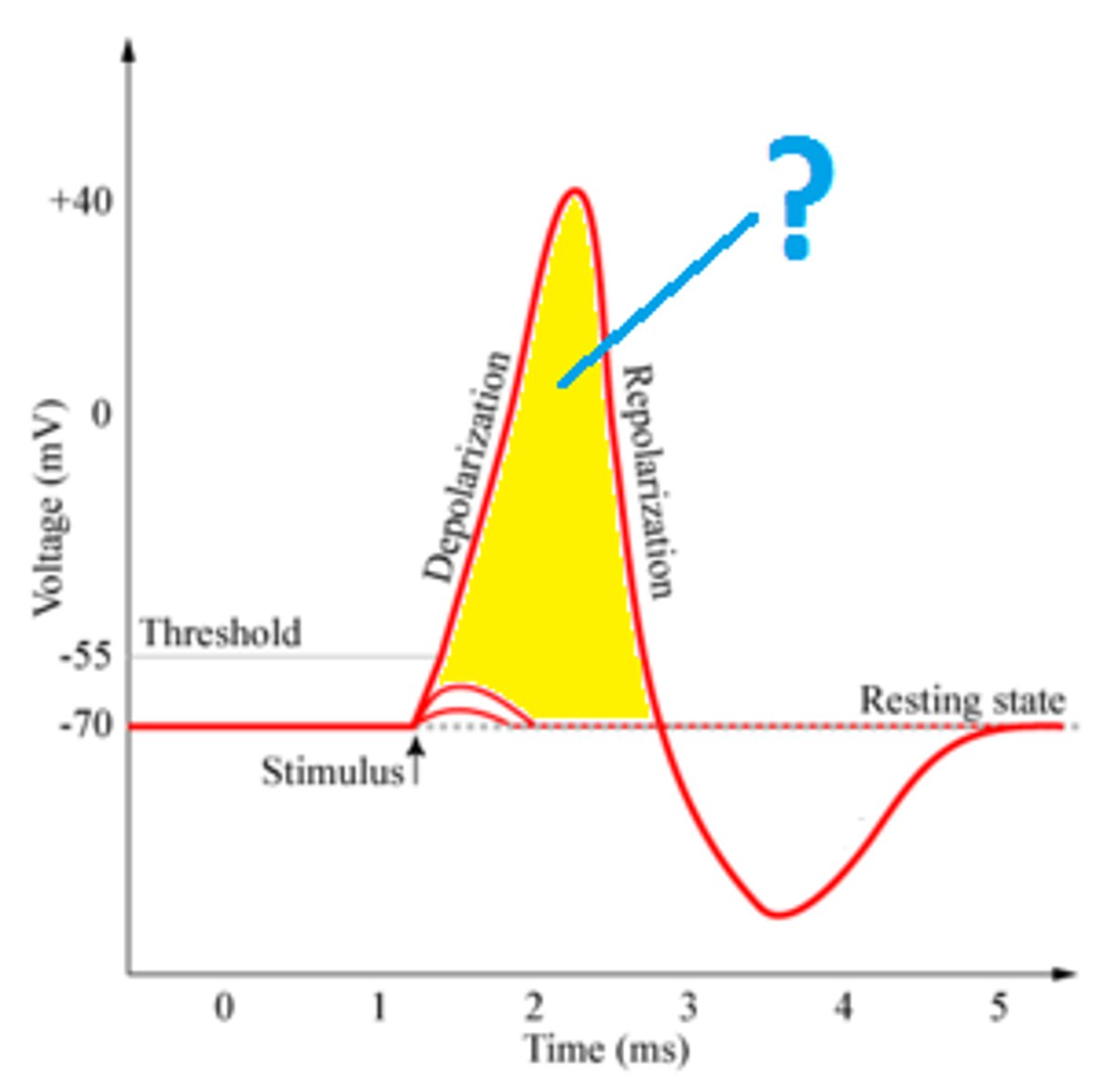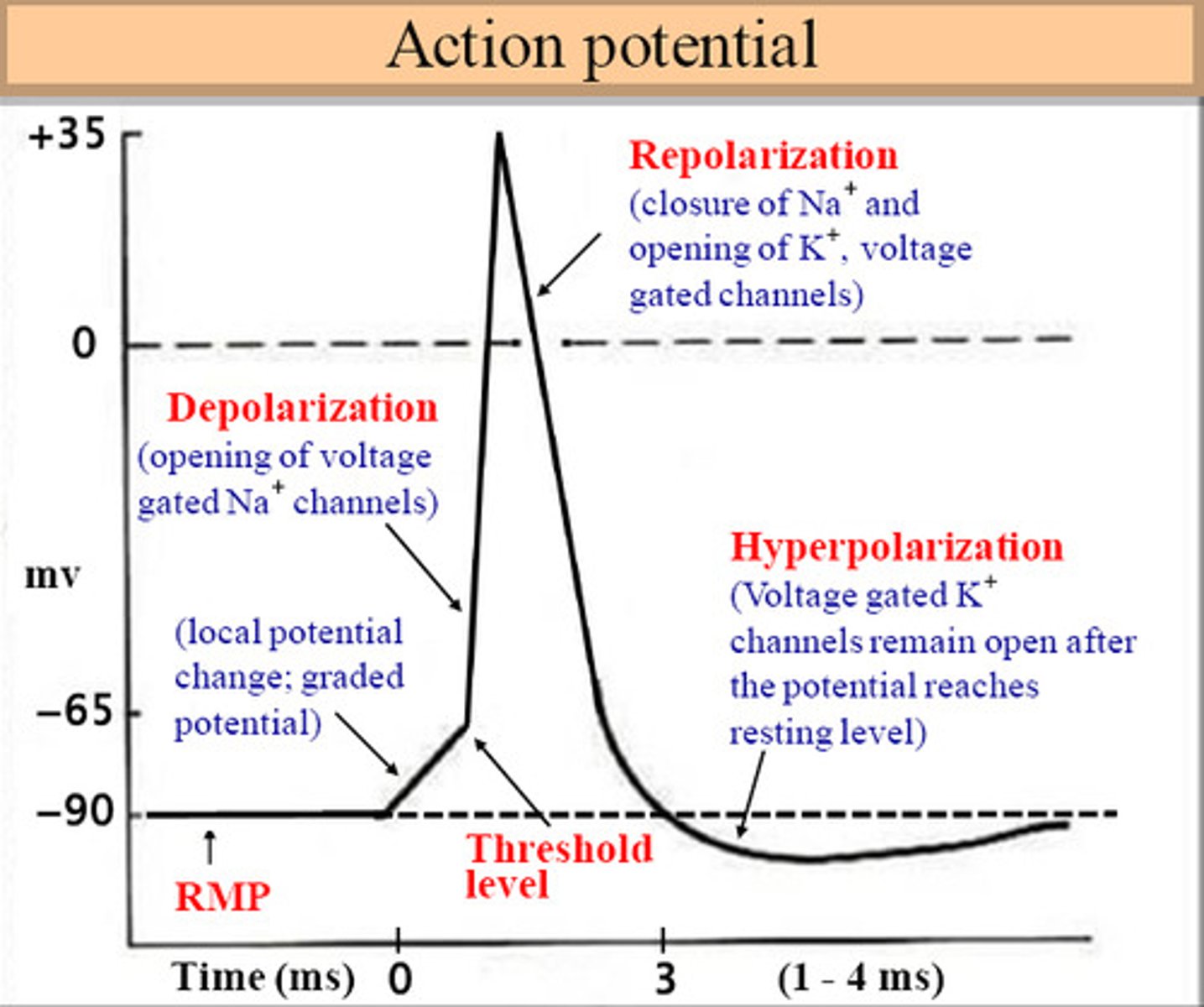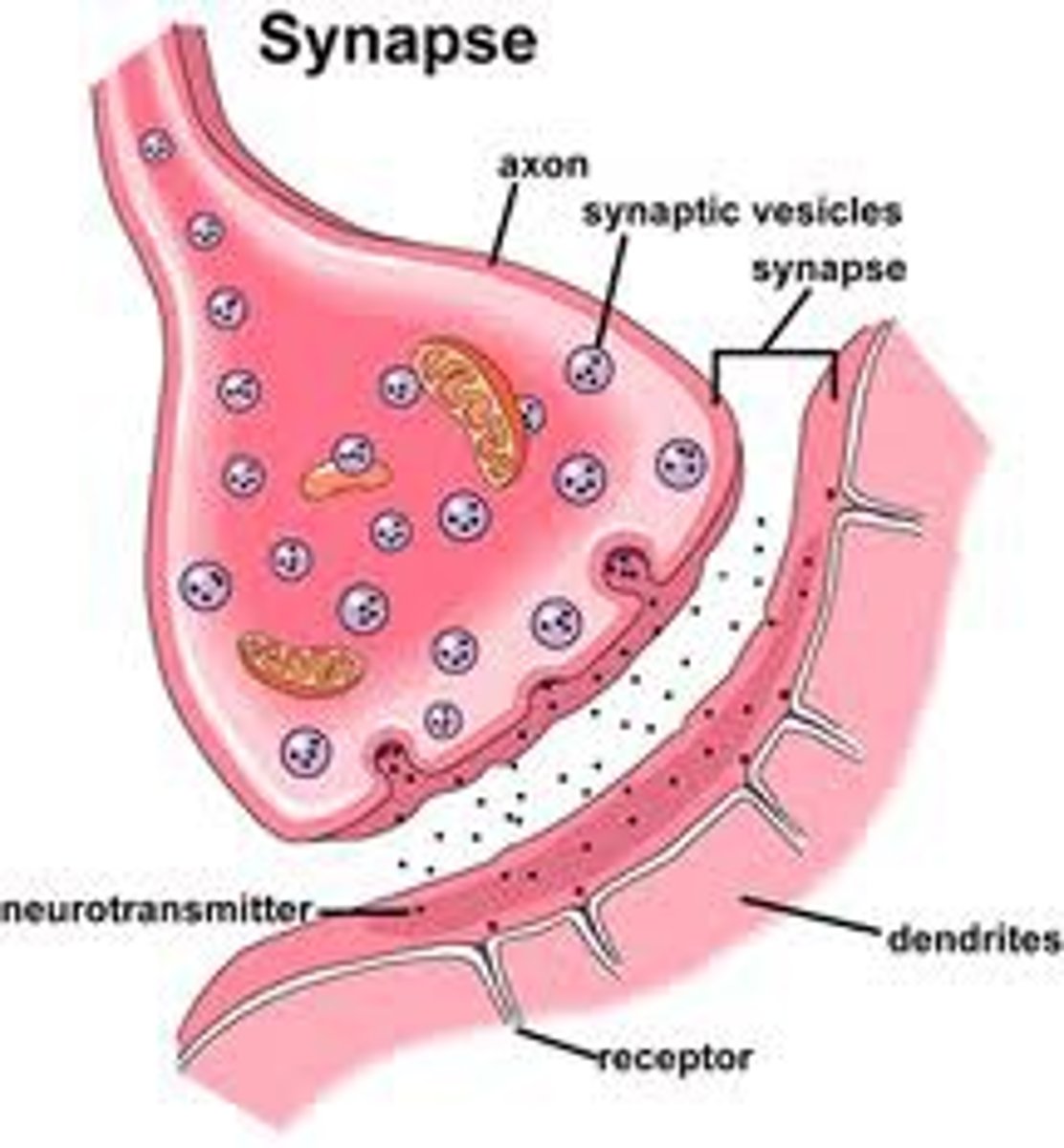C2.2 Neural signalling
1/23
There's no tags or description
Looks like no tags are added yet.
Name | Mastery | Learn | Test | Matching | Spaced |
|---|
No study sessions yet.
24 Terms
neurons
cells responsible for sending and receiving signals from the body to the brain and back to the body
structure of a neuron
- cell body (soma): the central part of the neuron that includes the nucleus, cytoplasm, and the typical organelles
- Dendrites: multiple shorter fibres receiving and processing incoming signals.They help in making connections with other neurons, increasing their surface area for recieving signals.
- Axon: A long, signle fibre moving away from the cell body helping in the conduction of electrical impulse and dendrites

resting potential
potential difference across a nerve cell membrane when it is not stimulated. approximately -70mV
action potential
generated when the membrane potential of a neuron rapidly rises and falls.
It is the potential difference in the membrane that occurs on excitation of the neuron.
3 types of neurons
- sensory: allow us to feel sensation
- Motor: Connect brain and muscles.
- Relay: transmit signals between sensory and motor neurons
Outside of a neuron at rest
Positive (mainly caused by sodium ions found on the outer side)
Inside of a neuron at rest
negative (this charge is relative, however there are more positive ions on the outside). In the inner side we can find more potassium ions.
3 factors contributing to the resting potential
1) sodium-potassium pump
2) Leakage of ions
3) Negatively charged particles inside the nerve fibre which contribute to the charge imbalance
Sodium potassium pump contribution to the resting potential
- Number of K+ and Na+ ions pumped are unequal
- This creates a charge imbalance and concentration gradients for both ions
- 3 Na+ and 2 K+ ions pumped at a time
- Does this via active transport: utilises energy from ATP to perform this function
Leakage of ions contribution to the resting potential
K+ ions leak out of the membrane at a faster rate than Na+ leaks in, increasing the charge imbalance across the membrane
What happens during an action potential?
- When a stimuli is recieved, the Na+ channels open, allowing inflow of Na+ ions into the neuron.
- This makes the axon fibre depolarized.
-After this, the Na+ channels close and the K+ channels open. K+ ions move to the outside of the membrane.
Graph of what happens during neural signalling
?- is action potential (couldnt find any better diagram)

Resting state
Na + and K+ channels are closes. Resting potential is maintained
Depolarization
The interior of the cell is less negative relative to the cell exterior. Some Na+ channels are open and Na+ influx through those channels
Rising phase
Na+ influx makes the inside of the membrane makes the inside of the membrane positive with respect to the outside.

Repolarization/ Falling phase
The action potential triggers for all Na+ channels to close, blocking Na+ influx. The activation gates on most K+ channels open, making the inside of the cell negative again.
Hyperpolarization
Both gates on Na+ channls are closed, but some K+ channels are still open.
As gates close on most K+ channels, the inactivation gates open on Na+ channels.
The membrane resturns to its resting state.

Factors affecting speed of nerve impulse
- Amount of mylentation
- Diameter of axon
-Temperature
Amount of mylenation effect on speed of nerve impulse
Impulse travels faster along mylenated neurons. This is because it can jump from node to node, covering a larger distance in shorter time.
Diameter of the axon effect on speed of nerve impulse
Larger surface areas of axons with larger diameters are able to propagate action faster, due to less resistance from other molecules like proteins
Temperature effect on speed of nerve impulse
The cooler the temperature, the slower the transmission of nerve impulse. This is because kinetic energy decreases and ions move slower, getting a change in membrane potential faster.
The synapse
The synapse is the microscoping gap between a neuron and another thing. Once action potential reaches the end of the axon, it gets transferred to:
- another neuron
- muscle (effector)
-gland cells (effector)
Exitatory Postsynaptic Potentials (EPSPs) process
1. The neurotransmitters diffuse into the synaptic cleft from high concentration to low concentration
2. These then bind to receptors on the post-synaptic membrane
3. This binding allows sodium ion channels to open and there is an inflow of Na+ into the post-synaptic neuron
4. This causes an imbalance of charge and the resting potential is disturbed, causing depolarization.
5. This results in the generation of an EPSP, causing an action potential in the post-synaptic neuron.

Neurotransmitters
- Made in axon terminal
-Stores in vesicles
- Made by ribosomes in the cell body and transported into the axon terminal in vesicles
- When an action potential reaches the presynaptic knob (end), these neurotransmitters are released to pass the signal to the next neuron, as vescles diffuse into the cell membrane (after an action potential), making them release the neurotransmitters